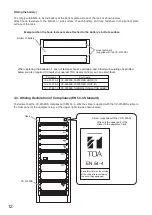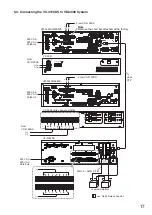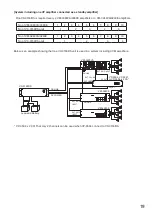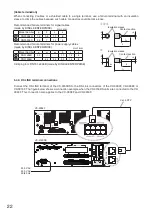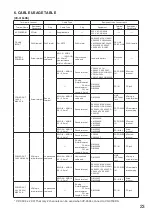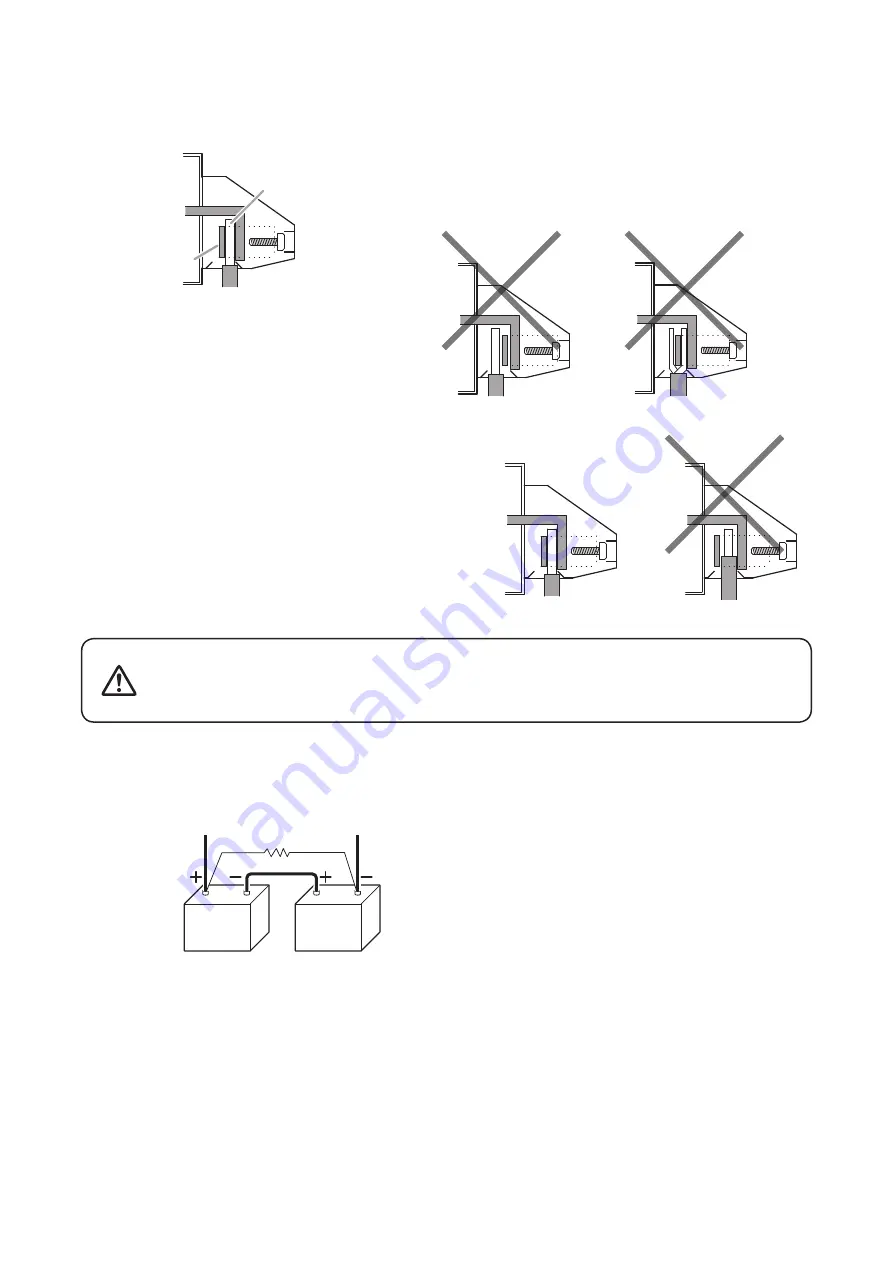
9
• Strip the cable end long enough (30 mm ± 5 mm) to be
fully clamped. Otherwise, its outer jacket prevents the
cable conductor from being tightly secured, causing poor
contact.
[Connecting the battery]
Note correct polarity (positive and negative orientation) when connecting
the power supply cord. Reversed polarity connections will cause damage
to the system.
• Insert the battery cable into the correct position in the battery terminal referring to the terminal's cross sectional
diagrams below.
18 kΩ (1/4 W)
Battery
Battery
Notes
To avoid battery failure and charger failure, take care of the following points.
• If batteries not recommended by the manufacturer are used and a charger failure occurs, connect a resistor
of 18 kΩ (1/4 W) parallel to the batteries.
• Use the specified type of batteries and capacity.
• When batteries are connected together in a series-parallel arrangement, the inter-connecting cables must be
of equal length and resistance to insure equalization of the load.
• Do not mix batteries with different capacity, new and old batteries, or batteries of different manufacturers.
Doing so may cause different characteristic values among batteries, possibly resulting in damage to the
batteries themselves or the connected equipment.
CAUTION
Correct position of the cable insertion
Incorrect position of the cable insertion
Wrong insertion position of the cable or a forked
cable insertion causes poor contact or insufficient
connection tightness, making the cable come off to
possibly cause short-circuit accident.
Correct
Incorrect
Cable conductor
Cable clamp












